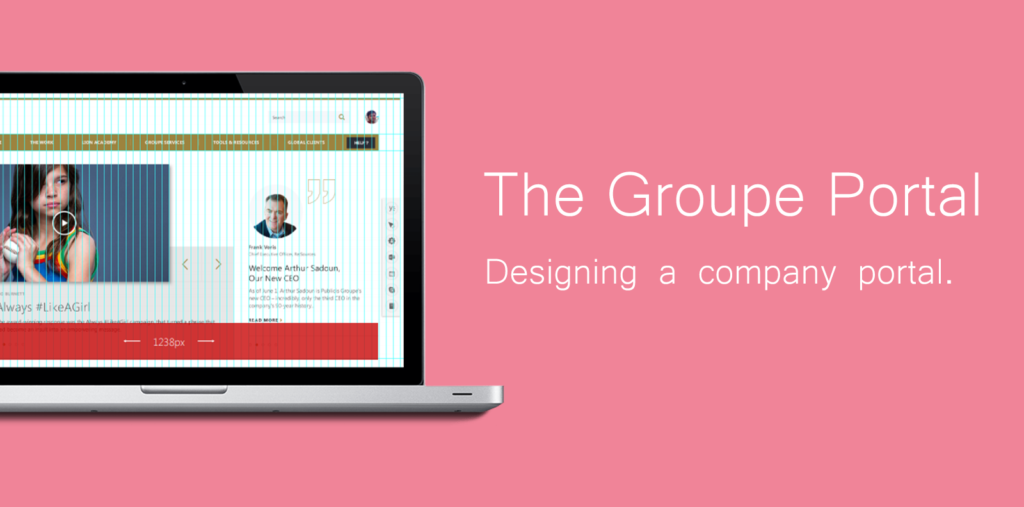
Overview
The project’s aim was to build a functional and value-added company intranet for the company’s staff of 80,000 people split across different agencies and locations.
Role
Project manager / UX Lead
Background
When I came on board this project it was already 18 months into production, over budget and ready to scrap the previous iteration of development and start again from scratch.
I led the project development, marketing, UX and UI strategy for the restart. I’ve listed some key achievements below:
- Turned a stumbling project into a viable product – taking on a failing project is a daunting task especially when everything is considered behind schedule from day one. Within 12 months from restarting the project we were able to release the portal to 80,000 users globally, providing a valuable resource to every member of staff.
- Wore many different hats – leading a project which oversaw multiple teams and many key stakeholders from across the organisation, meant juggling roles. I conducted research, provided wireframes, oversaw testing and monitored development while providing style guides, developed content (written and video series), communications and created update presentations for progress reviews.
- Managed multiple stakeholders expectations – a large part of my role was explaining what we planned to do, why we planned to do it, what had been completed and what additional requests could be incorporated. This required presenting c-level executives both in-person and online and ensuring buy-in from them to allow the project to proceed.
Defining the scope of the project
Working with the SMART goal framework (Specific, Measurable, Attainable, Relevant & Time-bound) in mind, the first step was to conduct research into what was expected from the project and how it could provide a beneficial resource to users.
This was done through a series of stakeholders and user interviews (including group sessions) and which allowed us to build a value proposition and structure of what was required for a minimum viable product (MVP).
To better understand the challenge from different perspectives we developed three user personas (C-level executive, an agency creative and a member of the IT team) so that we could ensure user needs would be met.
In order to maintain a schedule and provide timely updates, we created a status table and timeline (which was incorporated into a shared project calendar).
Designs / Working with Developers
Initial designs were drawn up using Photoshop and Illustrator. But also included low-fi techniques as well such as card sorting to better understand layout and patterns users expected.
Our development team was based in India, so I worked with them remotely. We worked in sprints (using the agile methodology) to ensure task priority was clear and our timeline maintained.
We went through several iteration processes, each time running in-house usability tests with sample groups from around the organisation.
Results
The intranet portal was initially launched to our Shared Solution Centres (roughly 5,000 staff) and following positive feedback, it was opened up to the entire group, providing access to roughly 80,000 staff.